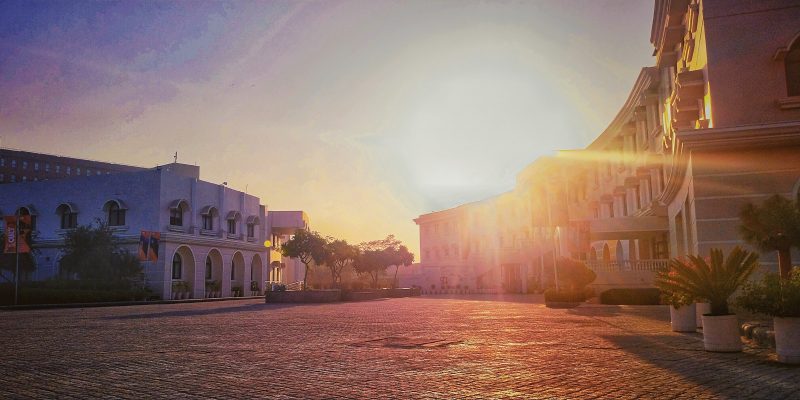World University of Design & University of Huddersfield Awarded ₹40 Million Grant To Study Future Of Heritage Post Office Buildings in India & the UK
World University of Design (WUD), India’s first University dedicated to education in the creative domain, in collaboration with University of Huddersfield (UK) have been awarded a ₹4.4 crore (₹40 Million) grant by Arts and Humanities Research Council (AHRC) to spearhead a new knowledge and cultural exchange project. The project aims to adopt a creative place-based scanning approach to investigate the post office cultures in India and the UK and will further examine aspects of British era using cutting-edge architectural technology to explore how post office buildings in India can be used in the future. The project will run till December 2026 and will also involve Postal Museum of London and the Indian National Trust for Art and Cultural Heritage (INTACH).
Arts and Humanities Research Council (AHRC) is UK’s largest provider of response-led and strategic funds for outstanding original research across arts and humanities and fund world-class, independent research in subjects ranging from philosophy and the creative industries to art conservation and product design. This initiative is a collaboration between Professors in Architecture, Nic Clear and Shaleen Sharma, Reader in Cultural Theory and Practice, Rowan Bailey, architecture students and South Asian communities from both countries.
Commenting on the announcement, Dr Sanjay Gupta, Vice Chancellor of World University of Design (WUD), said, “At WUD, we are always working towards fostering deeper collaborations and cultural exchanges between our institution and global players. This project will enhance international cultural collaborations between India and UK and will position India as a leader in creative and cultural industries. The project will not only preserves heritage but also enhance tourism, urban renewal, and international cultural exchange, supporting the government’s multifaceted developmental vision. It’s an honour for us to be selected for this prestigious grant and we look forward to embarking on this collaboration and making meaningful contributions to the global community. This project will not only enrich our students’ academic experiences but also promote global perspectives and knowledge sharing.”
Innovative use of 3D technology
The project will utilize the expertise of Professor Nic Clear in 3D scanning to create visual representations that engage and address the specific site narratives to help explore the cultural legacies of post office buildings to bring out interesting British-era architectural heritage. These complexities will be explored through this co-creative practice-based research.
Narrating the stories of buildings and the people
The project involves the Postal Museum of London and the Indian National Trust for Art and Cultural Heritage (INTACH), where they will utilize innovative software to create 3D models of impressive British-era buildings, and the creative community engagement will capture the stories of people who worked in post offices both in India and around Kirklees in England.
“Scanning these buildings give us a way to identify how these sites could be repurposed or preserved for architectural heritage,” says Rowan, Director of the Centre for Cultural Ecologies in Art, Design and Architecture and Principal Lead for the project. “We are also planning exhibitions both in the UK and India, where we can share the stories and lived experiences of people who were post masters and post mistresses from the South Asian community in the UK, as well as what people remember from working in these post office buildings in India itself.”
The Knowledge and Cultural Exchange Project aligns with the India-UK 2030 Roadmap, a long-term project whose aims include enhancing cultural relations with support for collaboration, research and exchange in partnership with cultural innovators, creative organisations and heritage sectors to strengthen the creative economy.
The project will contribute to HRIDAY (Heritage City Development and Augmentation Yojana) by preserving India’s cultural heritage and finding adaptive uses for historic structures, resonating with these government initiatives. The project also aligns with the “Dekho Apna Desh” initiative by transforming old post office buildings and promoting domestic tourism. Repurposing historic post office buildings aligns with the urban renewal (Smart City) efforts, turning them into active community spaces. The use of cutting-edge architectural technology, aligning with the Digital India vision also showcases India’s technological advancement and potential for innovation in cultural sectors.







